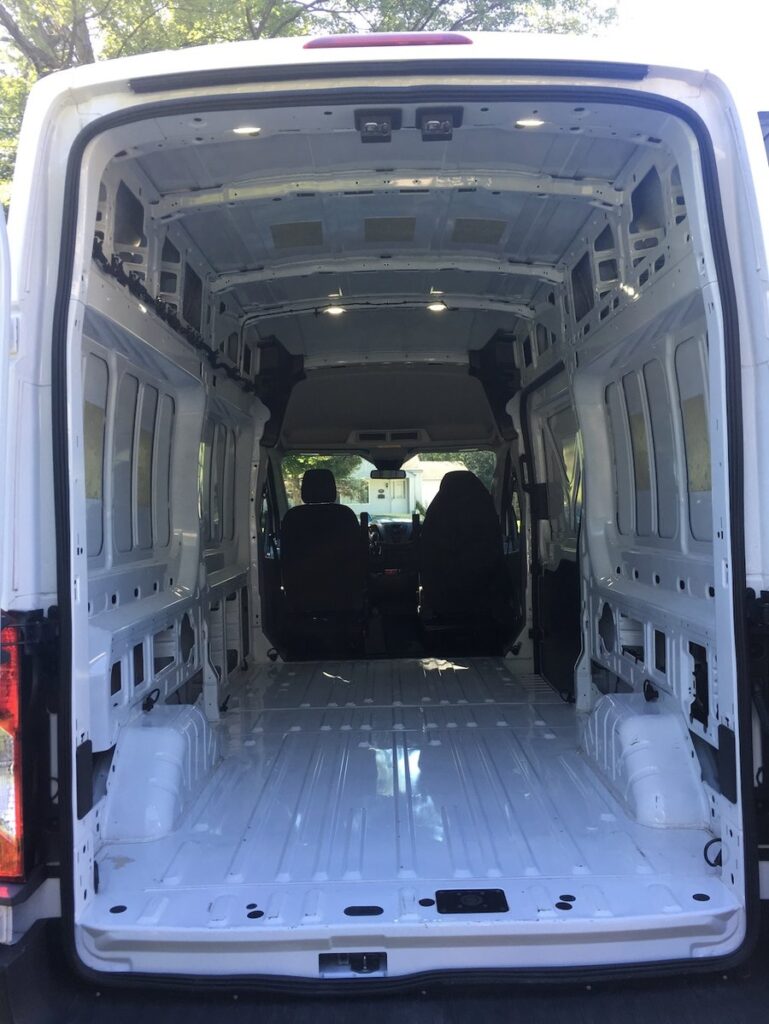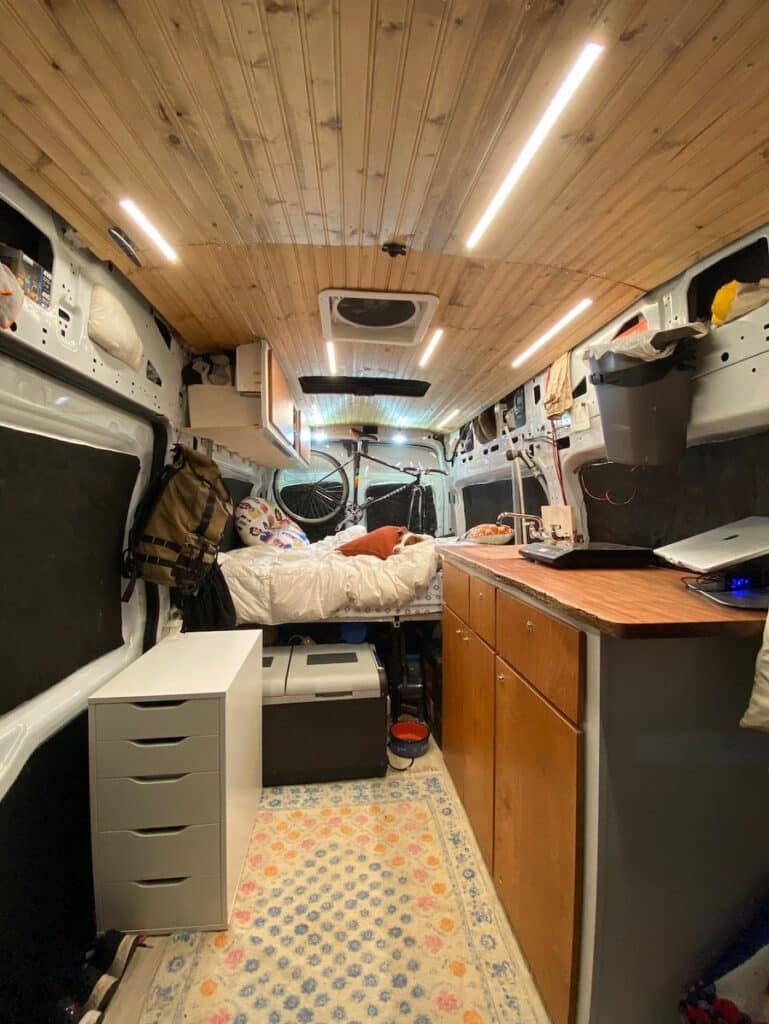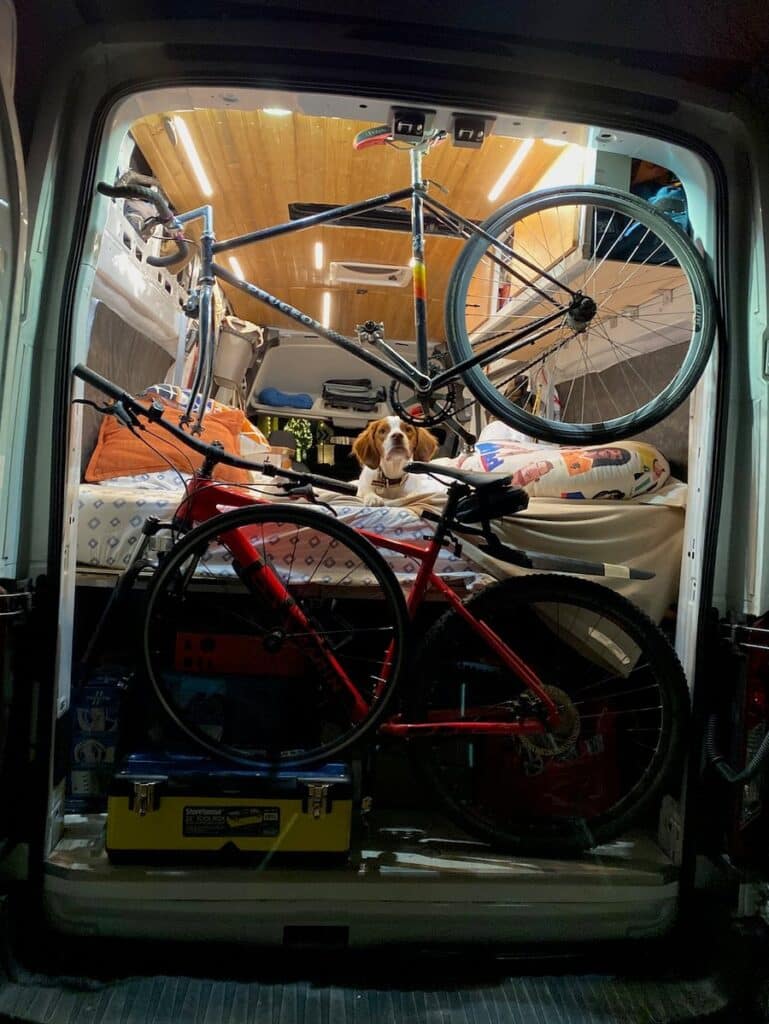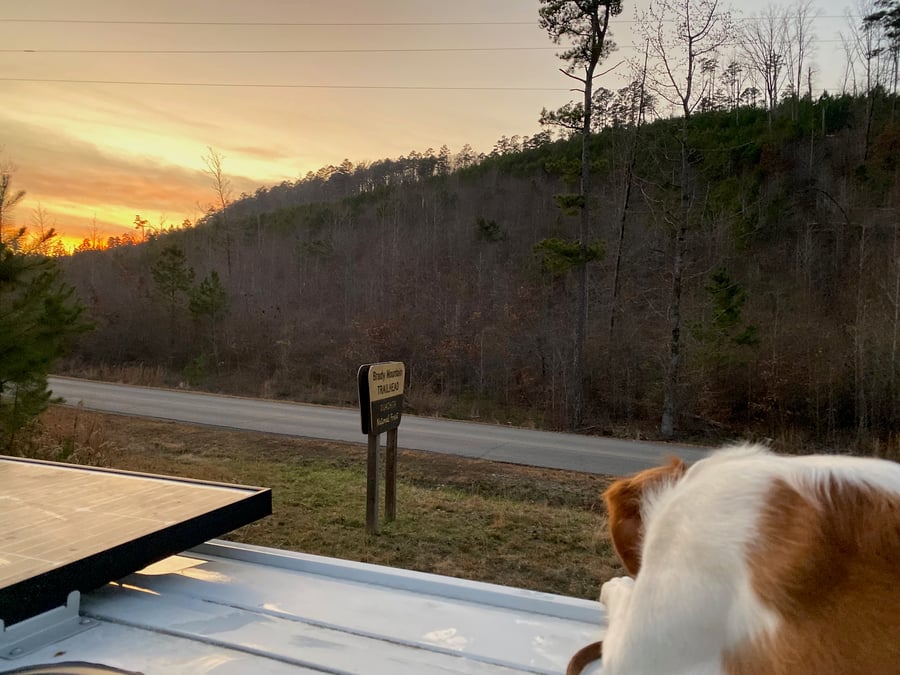BLOG
Engineering Off the Clock: My Camper Van Project
Very has a history of hiring people with unique passions outside the office that, in addition to bringing them joy, also make them more well-rounded and motivated workers. And it seems that I’m one of them – or so I’ve been told. The reason for this is that most of my time outside of work lately has been spent turning my camper van into the perfect home and remote office to support a nomadic lifestyle.
Why Van Life?
Before I joined Very, a friend of mine told me about how he was working remotely and living out of his van, and I was instantly jealous. The idea of living and working on the road, and getting to experience nature and people in a new way, is really appealing to me. I can make a national forest my backyard where I can ride my bikes, paddleboard, and go for runs with my dog in the breathtaking scenery.
Van life also struck me as a great way to reduce my footprint on the environment. Granted, vans use gas, but if I could stay put for a while once I reach a desired destination (like Yellowstone National Park), there’s an opportunity to reduce carbon emissions. Additionally, living long-term in a small space necessitates a more minimalist lifestyle and forces me to be more environmentally conscious.
So, I started looking into remote work opportunities – and here I am, doing work I love as a software engineer at Very.
I started at Very in February 2019, and by July I’d graduated from fantasizing about life on the road via Pinterest boards to actually picking out and purchasing my 2017 Ford Transit High Roof. After taking a camping trip with friends as an initial “test drive,” I started building out everything I need for this van to be a comfortable home and workspace for IoT projects.
Tricking My Ride
I’ve never done something like this before, so I’ve done a lot of research online and by watching an endless stream of YouTube videos. But I started out knowing one thing – my van needed power. So, first things first, I set up all the electricity on my own. (My criteria for my electrical system was that I wanted to be able to run my Ninja blender, which is 1400 watts. Smoothies = life.)
Before

After

My van runs on two 200 amp-hour lithium-ion batteries, and I’ve equipped the roof with a 300-watt solar panel. To convert the energy in the batteries to alternating power (AC) that will allow me to run appliances like my blender, I invested in a 2000 watt pure sine wave inverter.
Instead of installing air conditioning – which can be an intense drain on your batteries – I have a Maxx Air Fan that should provide cooling and ventilation. Additionally, to stay warm, I have a Webasto gasoline-powered heater (0.05 gallons/hr) that taps into the van’s gas tank. To cook meals, I got a portable induction stove, which is much more energy-efficient than an electric stove.

Once my van had power, I started working on creating a comfortable living space. I built everything in the van myself, including the kitchen cabinets with a live edge wood countertop and stainless steel sink. For a place to sleep, I decided to build a bed that could also convert into a couch when needed, so I built it in a grid system with four squares that can be folded in four different ways. That way, the couch could face different directions depending on how it’s assembled. The entire grid is made out of aluminum (making it lightweight but super strong), which I had cut at a local store, and then drilled all the holes and sanded the edges and put it together myself.
For additional seating, I’ve got swivel seats on both the driver’s and passenger’s side in the van, which opens up a ton of well-lit space for taking video calls with teammates and clients. And speaking of those calls, you might be wondering – how will I have connections to do my work if I’m out in the wilderness? For that, I’ll use my iPhone as a personal hotspot plus I have a cell signal booster, which extends the range of my cellular network in places where I have low bars.
Next Steps
The van is still a work in progress, and probably will be for a while as I travel and discover new ways to optimize the interior and experience. Currently, I have a few more additions already planned. I’m going to install ¼” plywood on the walls and add some finishing touches to make things more organized. I’m also planning to replace my white IKEA drawers with a more space-efficient custom cabinet.
My First Trip

So far, van life is going well – I left for my first trip from my home in Michigan on Tuesday, Dec 3, 2019. A quick overview of the places I’ve visited so far below:
- Chicago, IL, where I visited some friends
- St Louis, MO
- Little Rock, AR
- Ouachita National Forest near Hot Springs, AR
- Dallas, TX to visit my brother and his family
- Austin, TX to visit another friend
My final goal in this maiden voyage is to arrive in Northern California by December 24 to spend the holidays with my family. By the time this blog is published, my first journey should be complete!
Taking time to appreciate this journey is important to me, so I haven’t driven more than five hours a day. I love stopping to see all the different parts of the country, and I’m excited to see where my van takes me.
Are you interested in working with a team of IoT developers who make awesome things on and off the clock? Tell us more about your project today.









